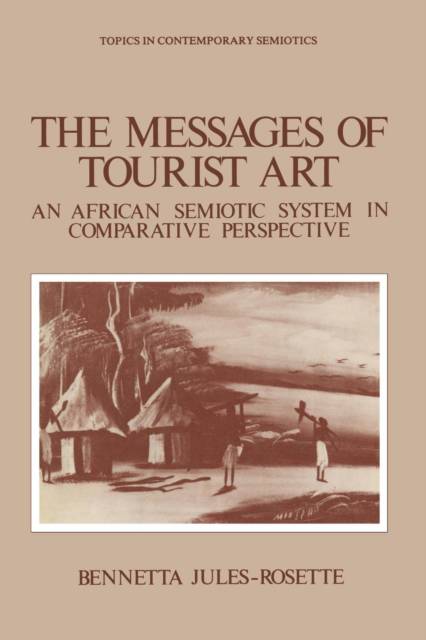
- Retrait gratuit dans votre magasin Club
- 7.000.000 titres dans notre catalogue
- Payer en toute sécurité
- Toujours un magasin près de chez vous
- Retrait gratuit dans votre magasin Club
- 7.000.0000 titres dans notre catalogue
- Payer en toute sécurité
- Toujours un magasin près de chez vous
The Messages of Tourist Art
An African Semiotic System in Comparative Perspective
Bennetta Jules-Rosette
83,95 €
+ 167 points
Description
Tourist art may be a billion dollar business. Nevertheless, such art is despised. What is worse, the "bad" culture is seen as driving out the "good. " Commer- cialization is assumed to destroy traditional arts and crafts, replacing them with junk. The process is seen as demeaning to artists in the traditional societies, who are seduced into a type of whoredom: unfeeling production of false beauty for money. The arts remain problematic for the social sciences. Sociology textbooks treat the arts as subordinate reflections of social forces, norms, or groups. An- thropology textbooks conventionally isolate the arts in a separate chapter, failing to integrate them with analyses of kinship, economics, politics, language, or biology. Textbooks reflect the guiding theories, which emphasize such factors as modes of production, patterns of thought, or biological and normative con- straints, but their authors have not adequately formulated the aesthetic dimen- sion. One may compare the theoretical status of the arts to that of religion. After the contributions by Emile Durkheim and Max Weber, the sociology of religion is well established, but where is a Durkheim or Weber for the sociology of art? What is true of the social sciences in general holds for understanding of modernization in the Third World. These processes and those places are analyzed economically, politically, and socially, but the aesthetic dimension is treated in isolation, if at all, and is poorly grasped in relation to the other forces.
Spécifications
Parties prenantes
- Auteur(s) :
- Editeur:
Contenu
- Nombre de pages :
- 266
- Langue:
- Anglais
- Collection :
- Tome:
- n° 4
Caractéristiques
- EAN:
- 9781475718294
- Date de parution :
- 06-03-13
- Format:
- Livre broché
- Format numérique:
- Trade paperback (VS)
- Dimensions :
- 152 mm x 229 mm
- Poids :
- 385 g

Les avis
Nous publions uniquement les avis qui respectent les conditions requises. Consultez nos conditions pour les avis.






